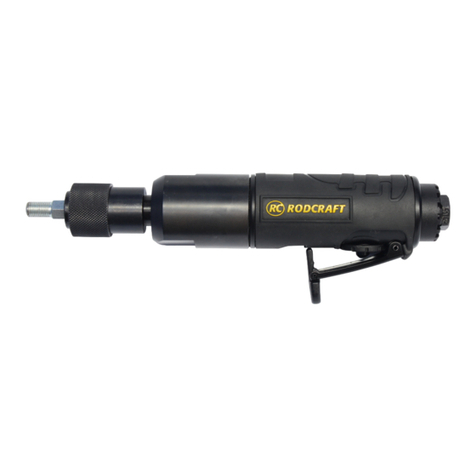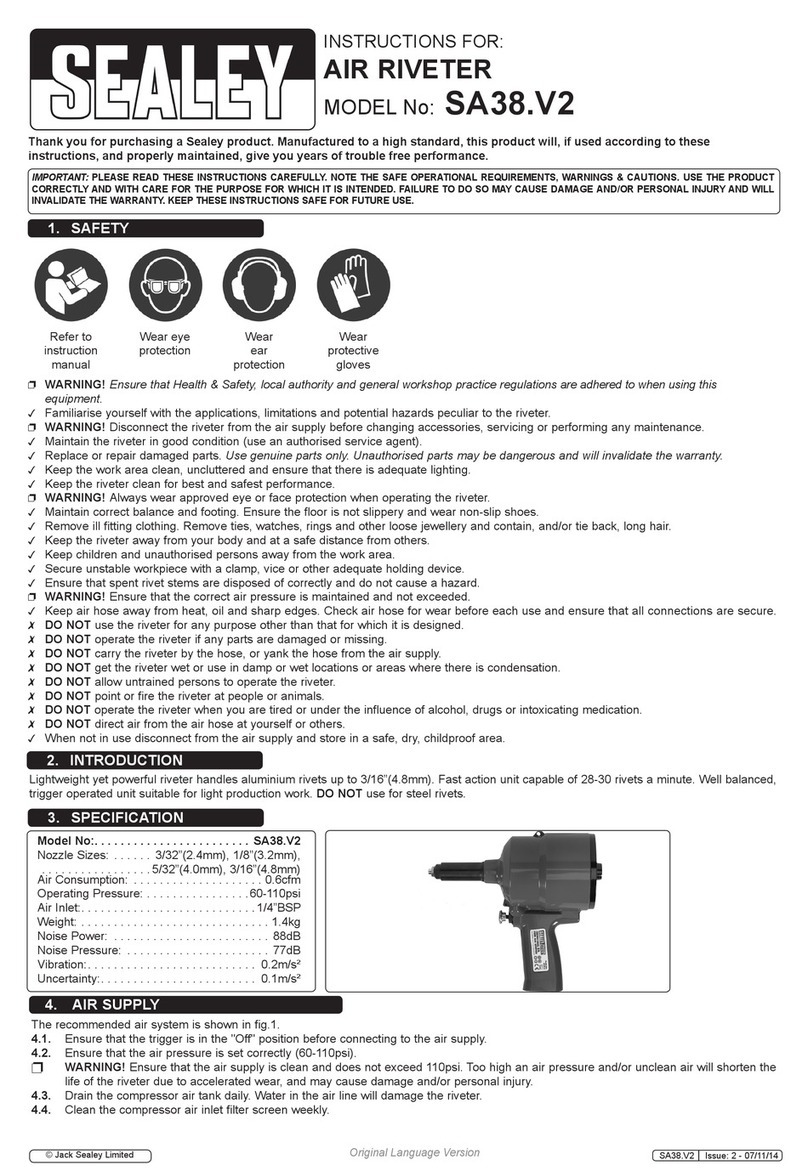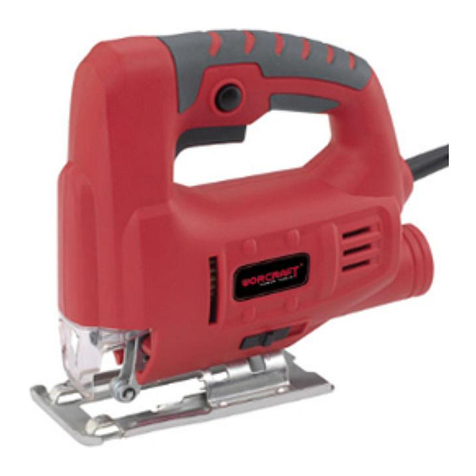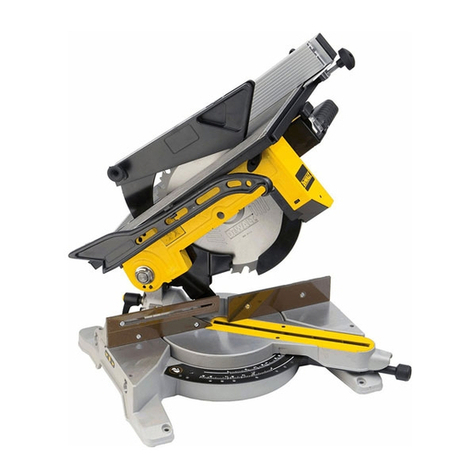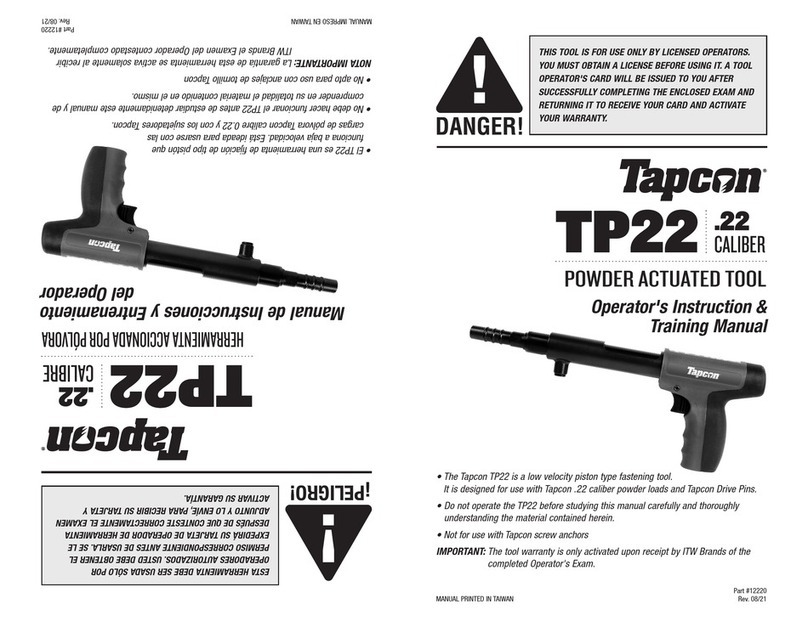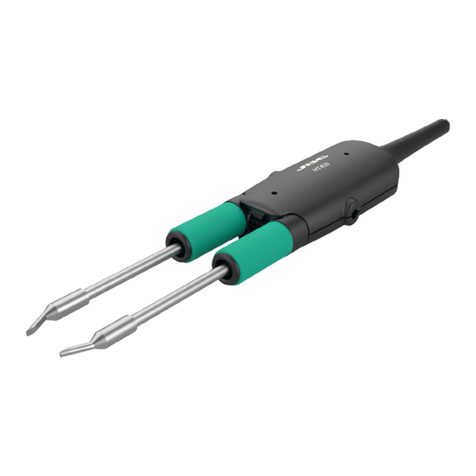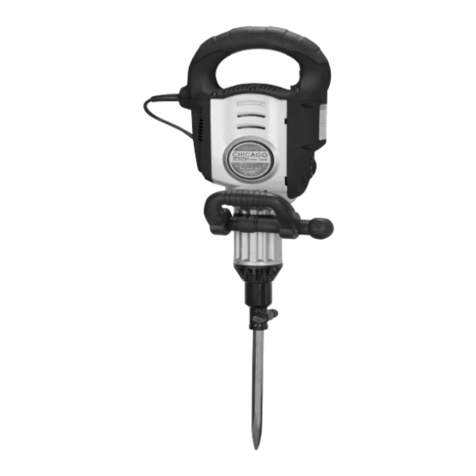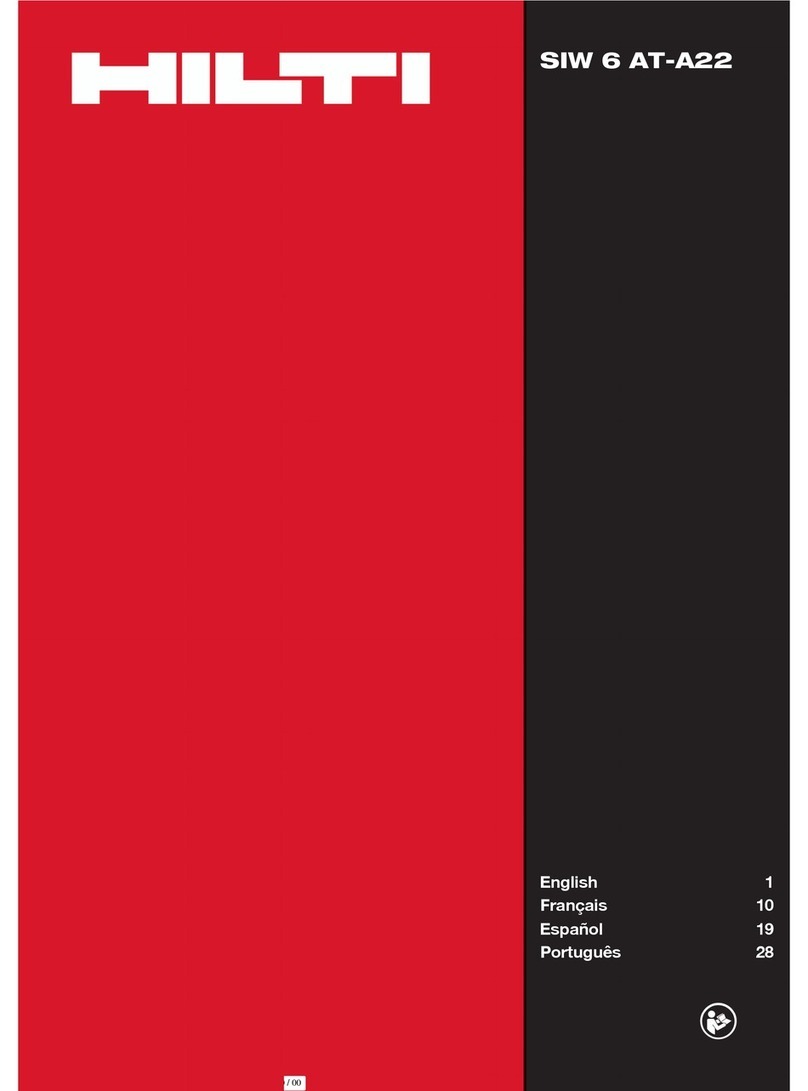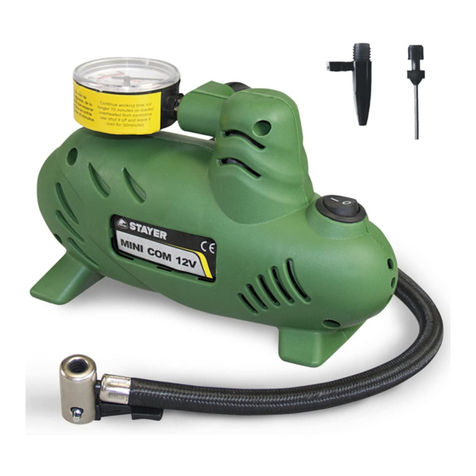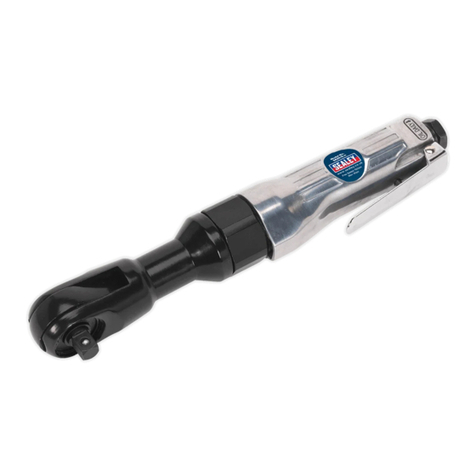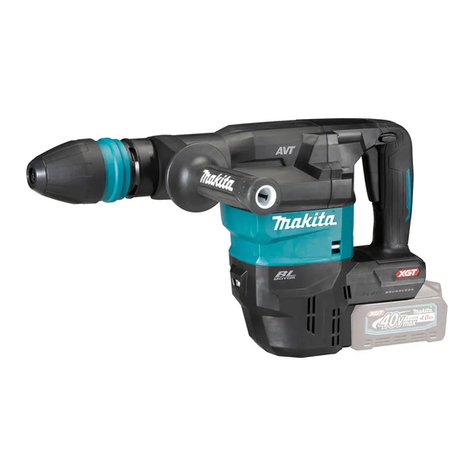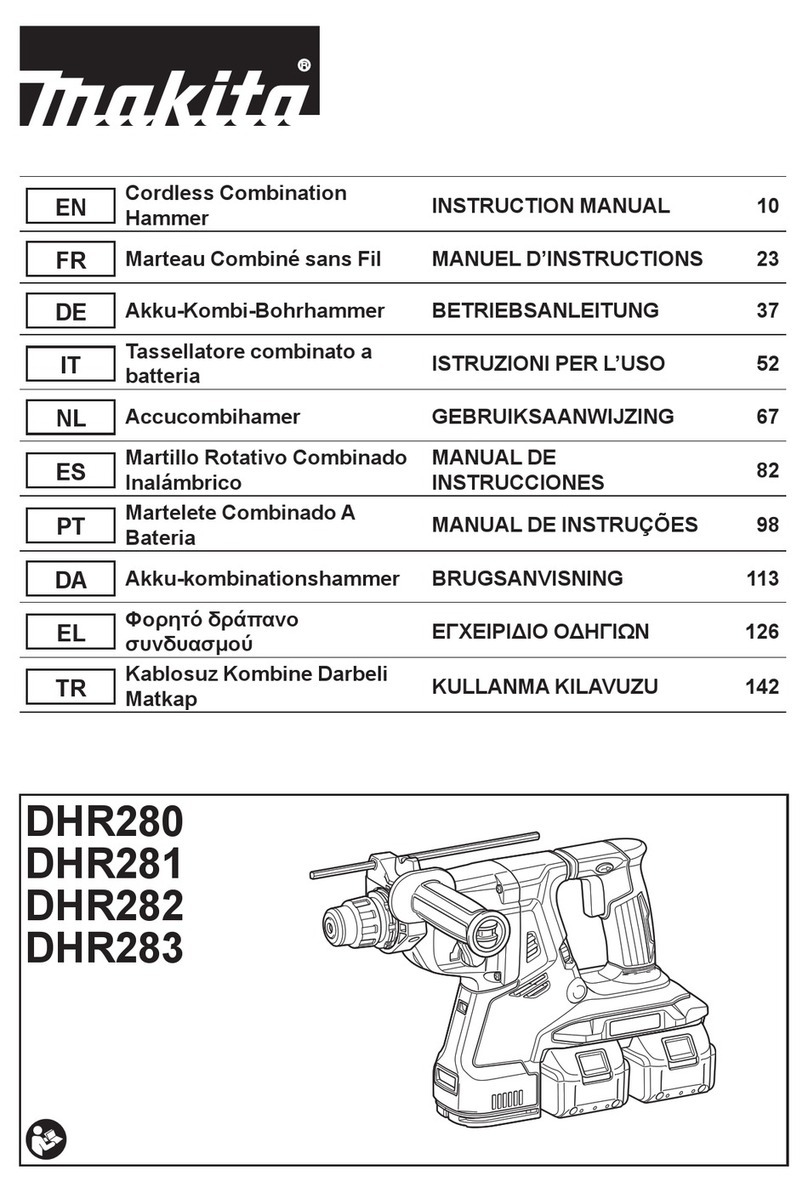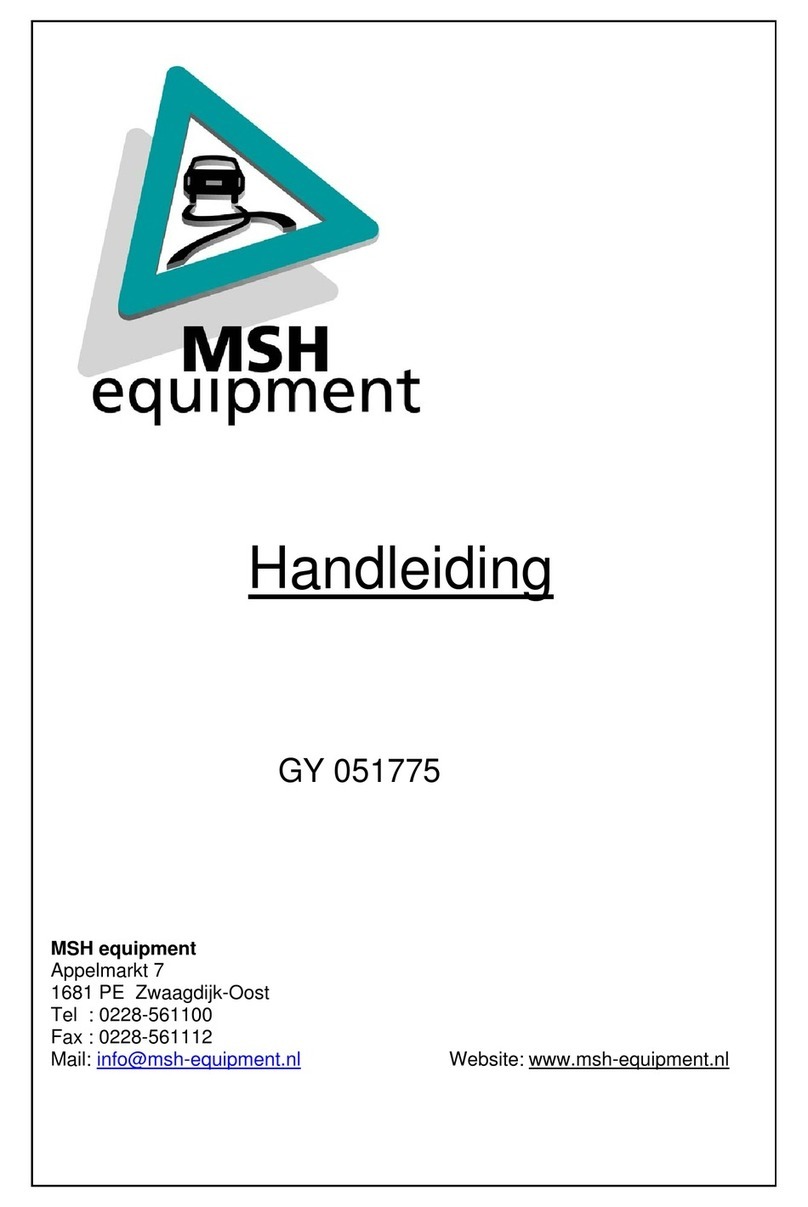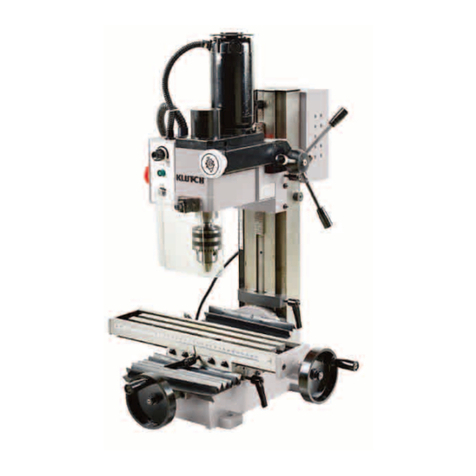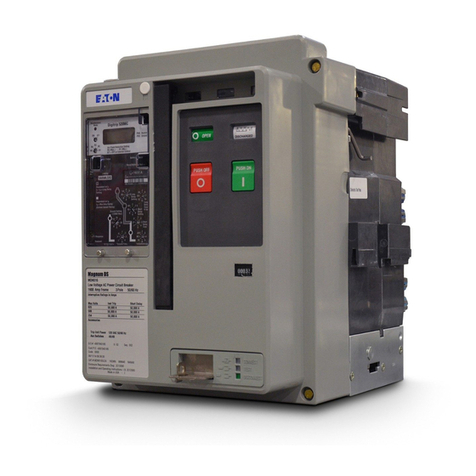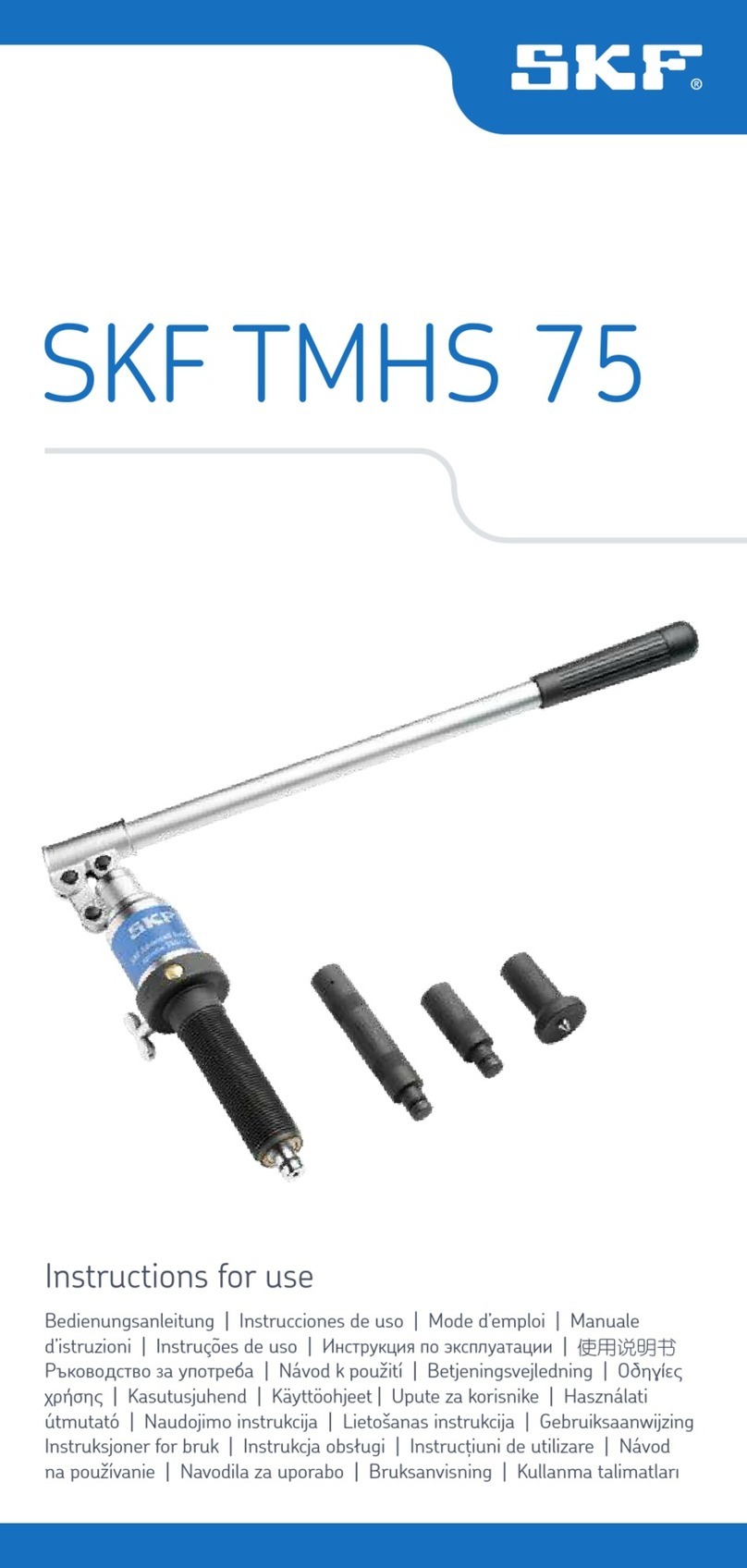Site SMA400 User manual

ENGLISH
INSTRUCTION MANUAL
DOUBLE INSULATION
WARNING:
For your personal safety, READ and UNDERSTAND before using.
SAVE THESE INSTRUCTIONS FOR FUTURE REFERENCE.
Jig Saw
SMA400
008472

2
ENGLISH
SPECIFICATIONS
Model SMA400
Length of stroke 26 mm
mm531dooW
Max. cutting capacities
mm01leetS
Strokes per minute (min-1) 800 - 2,800
Overall length 236 mm
Net weight 2.4 kg
Safety class /II
END201-4
Symbols
The following show the symbols used for the equipment.
Be sure that you understand their meaning before use.
Read instruction manual.
DOUBLE INSULATION
Only for EU countries
Do not dispose of electric equipment
together with household waste material!
In observance of European Directive
2002/96/EC on waste electric and
electronic equipment and its
implementation in accordance with
national law, electric equipment that
have reached the end of their life must
be collected separately and returned to
an environmentally compatible
recycling facility. For further information
visit www.recycle-more.co.uk ENE019-1
Intended use
The tool is intended for the sawing of wood, plastic and
metal materials. As a result of the extensive accessory
and saw blade program, the tool can be used for many
purposes and is very well suited for curved or circular
cuts.
ENF002-1
Power supply
The tool should be connected only to a power supply of
the same voltage as indicated on the nameplate, and
can only be operated on single-phase AC supply. They
are double-insulated in accordance with European
Standard and can, therefore, also be used from sockets
without earth wire.
ENG004-2
For European countries only
Noise and Vibration
The typical A-weighted sound pressure level is 85 dB (A).
Uncertainty is 3 dB(A).
The noise level under working may exceed 85 dB (A).
Wear ear protection.
The typical weighted root mean square acceleration
value is 6 m/s2.
These values have been obtained according to
EN60745.
ENH501-1
Declaration of Conformity
Site UK Ltd
BA 22 8RT
Declare that the product
Jig saw
SMA400
Complies with the essential health and safety
requirements of the following directives:
98/37 EC - Machinery Directive.
2004/108 EC
Standards and technical specifications referred to:
EN60745
EN55014
EN61000
Authorised Signatory
2007
000245
Peter Harries
Site UK Ltd
Quality Manager

3
GEA005-1
General Power Tool Safety
Warnings
WARNING Read all safety warnings and all
instructions. Failure to follow the warnings and
instructions may result in electric shock, fire and/or
serious injury.
Save all warnings and
instructions for future reference.
Work area safety
1. Keep work area clean and well lit. Cluttered or
dark areas invite accidents.
2. Do not operate power tools in explosive
atmospheres, such as in the presence of
flammable liquids, gases or dust. Power tools
create sparks which may ignite the dust or fumes.
3. Keep children and bystanders away while
operating a power tool. Distractions can cause
you to lose control.
Electrical safety
4. Power tool plugs must match the outlet. Never
modify the plug in any way. Do not use any
adapter plugs with earthed (grounded) power
tools. Unmodified plugs and matching outlets will
reduce risk of electric shock.
5. Avoid body contact with earthed or grounded
surfaces such as pipes, radiators, ranges and
refrigerators. There is an increased risk of
electric shock if your body is earthed or grounded.
6. Do not expose power tools to rain or wet
conditions. Water entering a power tool will
increase the risk of electric shock.
7. Do not abuse the cord. Never use the cord for
carrying, pulling or unplugging the power tool.
Keep cord away from heat, oil, sharp edges or
moving parts. Damaged or entangled cords
increase the risk of electric shock.
8. When operating a power tool outdoors, use an
extension cord suitable for outdoor use. Use of
a cord suitable for outdoor use reduces the risk of
electric shock.
9. If operating a power tool in a damp location is
unavoidable, use a residual current
device (RCD).Use of an RCD reduces the risk
of electric shock.
Personal safety
10. Stay alert, watch what you are doing and use
common sense when operating a power tool.
Do not use a power tool while you are tired or
under the influence of drugs, alcohol or
medication. A moment of inattention while
operating power tools may result in serious
personal injury.
11. Use personal protective equipment. Always
wear eye protection. Protective equipment such
as dust mask, non-skid safety shoes, hard hat, or
hearing protection used for appropriate conditions
will reduce personal injuries.
12. Prevent unintentional starting. Ensure the
switch is in the off-position before connecting
to power source and/or battery pack, picking
up or carrying the tool. . Carrying power tools
with your finger on the switch or energising power
tools that have the switch on invites accidents.
13. Remove any adjusting key or wrench before
turning the power tool on. A wrench or a key left
attached to a rotating part of the power tool may
result in personal injury.
14. Do not overreach. Keep proper footing and
balance at all times. This enables better control
of the power tool in unexpected situations.
15. Dress properly. Do not wear loose clothing or
jewellery. Keep your hair, clothing, and gloves
away from moving parts. Loose clothes,
jewellery or long hair can be caught in moving
parts.
16. If devices are provided for the connection of
dust extraction and collection facilities,
ensure these are connected and properly used.
Use of dust collection can reduce dust-related
hazards.
Power tool use and care
17. Do not force the power tool. Use the correct
power tool for your application. The correct
power tool will do the job better and safer at the
rate for which it was designed.
18. Do not use the power tool if the switch does
not turn it on and off. Any power tool that cannot
be controlled with the switch is dangerous and
must be repaired.
19. Disconnect the plug from the power source
and/or the battery pack from the power tool
before making any adjustments, changing
accessories, or storing power tools. Such
preventive safety measures reduce the risk of
starting the power tool accidentally.
20. Store idle power tools out of the reach of
children and do not allow persons unfamiliar
with the power tool or these instructions to
operate the power tool. Power tools are
dangerous in the hands of untrained users.
21. Maintain power tools. Check for misalignment
or binding of moving parts, breakage of parts
and any other condition that may affect the
power tool’s operation. If damaged, have the
power tool repaired before use. Many accidents
are caused by poorly maintained power tools.

4
22. Keep cutting tools sharp and clean. Properly
maintained cutting tools with sharp cutting edges
are less likely to bind and are easier to control.
23. Use the power tool, accessories and tool bits
etc. in accordance with these instructions,
taking into account the working conditions
and the work to be performed. Use of the power
tool for operations different from those intended
could result in a hazardous situation.
Service
24. Have your power tool serviced by a qualified
repair person using only identical replacement
parts. This will ensure that the safety of the power
tool is maintained.
25. Follow instruction for lubricating and
changing accessories.
26. Keep handles dry, clean and free from oil and
grease. GEB016-1
SPECIFIC SAFETY RULES
DO NOT let comfort or familiarity with product
(gained from repeated use) replace strict adherence
to jig saw safety rules. If you use this tool unsafely
or incorrectly, you can suffer serious personal
injury.
1. Hold power tools by insulated gripping
surfaces when performing an operation where
the cutting tool may contact hidden wiring or
its own cord. Contact with a "live" wire will make
exposed metal parts of the tool "live" and shock
the operator.
2. Use clamps or another practical way to secure
and support the workpiece to a stable platform.
Holding the work by hand or against your body
leaves it unstable and may lead to loss of control.
3. Always use safety glasses or goggles.
Ordinary eye or sun glasses are NOT safety
glasses.
4. Avoid cutting nails. Inspect workpiece for any
nails and remove them before operation.
5. Do not cut oversize workpiece.
6. Check for the proper clearance beyond the
workpiece before cutting so that the blade will
not strike the floor, workbench, etc.
7. Hold the tool firmly.
8. Make sure the blade is not contacting the
workpiece before the switch is turned on.
9. Keep hands away from moving parts.
10. Do not leave the tool running. Operate the tool
only when hand-held.
11. Always switch off and wait for the blade to
come to a complete stop before removing the
blade from the workpiece.
12. Do not touch the blade or the workpiece
immediately after operation; they may be
extremely hot and could burn your skin.
13. Do not operate the tool at no-load
unnecessarily.
14. Some material contains chemicals which may
be toxic. Take caution to prevent dust
inhalation and skin contact. Follow material
supplier safety data.
15. Always use the correct dust mask/respirator
for the material and application you are
working with.
SAVE THESE INSTRUCTIONS.
WARNING:
MISUSE or failure to follow the safety rules stated in
this instruction manual may cause serious personal
injury.
FUNCTIONAL DESCRIPTION
CAUTION:
• Always be sure that the tool is switched off and
unplugged before adjusting or checking function on
the tool.
Selecting the cutting action
1
001906
This tool can be operated with an orbital or a straight line
(up and down) cutting action. The orbital cutting action
thrusts the blade forward on the cutting stroke and
greatly increases cutting speed.
To change the cutting action, just turn the cutting action
changing lever to the desired cutting action position.
Refer to the table to select the appropriate cutting action.
1. Cutting action
changing lever

5
Position Cutting action Applications
For cutting mild steel,
stainless steel and plastics.
For clean cuts in wood
and plywood.
Small orbit
cutting action
For cutting mild steel,
aluminium and hard wood.
For cutting wood and
plywood.
For fast cutting in aluminium
and mild steel.
Large orbit
cutting action
For fast cutting in wood
and plywood.
0Straight line
cutting action
Medium orbit
cutting action
006582
Switch action
12
001907
CAUTION:
•Before plugging in the tool, always check to see
that the switch trigger actuates properly and
returns to the "OFF" position when released.
To start the tool, simply pull the switch trigger. Release
the switch trigger to stop.
For continuous operation, pull the switch trigger and
then push in the lock button.
To stop the tool from the locked position, pull the switch
trigger fully, then release it.
Speed adjusting dial
1
001908
The tool speed can be infinitely adjusted between 800
and 2,800 strokes per minute by turning the adjusting
dial. Higher speed is obtained when the dial is turned in
the direction of number 5; lower speed is obtained when
it is turned in the direction of number 1.
Refer to the table to select the proper speed for the
workpiece to be cut. However, the appropriate speed
may differ with the type or thickness of the workpiece. In
general, higher speeds will allow you to cut workpieces
faster but the service life of the blade will be reduced.
Workpiece to be cut Number on adjusting dial
5-4dooW
5-3leetsdliM
4-3leetssselniatS
5-3
aluminium
4-1scitsalP
006581
CAUTION:
•The speed adjusting dial can be turned only as far
as 5 and back to 1. Do not force it past 5 or 1, or
the speed adjusting function may no longer work.
The tools equipped with electronic function are easy to
operate because of the following features.
Constant speed control
Electronic speed control for obtaining constant speed.
Possible to get fine finish, because the rotating speed is
kept constant even under load condition.
Soft start feature
Safety and soft start because of suppressed starting
shock.
ASSEMBLY
CAUTION:
•Always be sure that the tool is switched off and
unplugged before carrying out any work on the
tool.
Installing or removing saw blade
1
001909
CAUTION:
•Always clean out all chips or foreign matter
adhering to the blade and/or blade holder. Failure
to do so may cause insufficient tightening of the
blade, resulting in a serious personal injury.
•Do not touch the blade or the workpiece
1. Tool opener
1. Speed adjusting
dial
1. Switch trigger
2. Lock button

6
immediately after operation; they may be
extremely hot and could burn your skin.
• Tighten the saw blade securely. Failure to do so
may cause a serious injury.
• When you remove the saw blade, be careful not to
hurt your fingers with the top of the blade or the tips
of workpiece.
To install the blade, open the tool opener to the position
shown in the figure.
Keeping that situation, insert the saw blade into the
blade clamp as far as the two protrusions of the blade
can not be seen.
12
3
001910
Return the tool opener to its original position.
After installing, always make sure that the blade is
securely held in place by trying to pull it out.
CAUTION:
• Do not open the tool opener excessively, or it may
cause tool damage.
To remove the blade, open the tool opener to the
position shown in the figure. Pull the saw blade out
toward the base.
1
001911
NOTE:
• Occasionally lubricate the roller.
Hex wrench storage
12
001912
When not in use, the hex wrench can be conveniently
stored.
OPERATION
1
2
001913
CAUTION:
• Always hold the tool base flush with the workpiece.
Failure to do so may cause blade breakage,
resulting in a serious injury.
• Do not use the tool with no load.
Turn the tool on and wait until the blade attains full
speed. Then rest the tool base flat on the workpiece and
gently move the tool forward along the previously
marked cutting line. When cutting curves, advance the
tool very slowly.
Bevel cutting
001914
CAUTION:
• Always be sure that the tool is switched off and
unplugged before tilting the base.
With the base tilted, you can make bevel cuts at any
angle between 0° and 45° (left or right).
1. Cutting line
2. Base
1. Base
2. Hex wrench
1. Jig saw blade
1. Blade clamp
2. Jig saw blade
3. Protrusions

7
Loosen the bolt on the back of the base with the hex
wrench. Move the base so that the bolt is positioned in
the centre of the bevel slot in the base.
1
2
3
001915
Tilt the base until the desired bevel angle is obtained.
The V-notch of the gear housing indicates the bevel
angle by graduations. Then tighten the bolt firmly to
secure the base.
12 3
4
6
5
001916
Front flush cuts
1
2
3
001917
Loosen the bolt on the back of the base with the hex
wrench and slide the base all the way back. Then tighten
the bolt to secure the base.
Cutouts
Cutouts can be made with either of two methods A or B.
A) Boring a starting hole:
1
001918
For internal cutouts without a lead-in cut from an
edge, pre-drill a starting hole 12 mm or more in
diameter. Insert the blade into this hole to start your
cut.
B) Plunge cutting:
001919
You need not bore a starting hole or make a lead-in
cut if you carefully do as follows.
(1) Tilt the tool up on the front edge of the base
with the blade point positioned just above the
workpiece surface.
(2) Apply pressure to the tool so that the front
edge of the base will not move when you
switch on the tool and gently lower the back
end of the tool slowly.
(3) As the blade pierces the workpiece, slowly
lower the base of the tool down onto the
workpiece surface.
(4) Complete the cut in the normal manner.
Finishing edges
001920
To trim edges or make dimensional adjustments, run the
blade lightly along the cut edges.
Metal cutting
Always use a suitable coolant (cutting oil) when cutting
metal. Failure to do so will cause significant blade wear.
The underside of the workpiece can be greased instead
of using a coolant.
1. Starting hole
1. Base
2. Bolt
3. Hex wrench
1. Graduations
2. Bevel slot
3. Base
4. V-notch
5. Bolt
6. Gear housing
1. Base
2. Bolt
3. Hex wrench

8
Dust extraction
1
2
001921
001922
The dust nozzle (accessory) is recommended to perform
clean cutting operations.
To attach the dust nozzle on the tool, insert the hook of
dust nozzle into the hole in the base.
The dust nozzle can be installed on either left or right
side of the base.
Then connect a vacuum cleaner to the dust nozzle.
1
2
001923
CAUTION:
•If you try to remove the dust nozzle forcibly, the
hook of the dust nozzle can be diminished and
removed unintentionally during operation.
Cover plate
1
2
001928
Use the cover plate when cutting decorative veneers,
plastics, etc. It protects sensitive or delicate surfaces
from damage. Fit it on the back of the tool base.
Anti-splintering device
1
2
001929
For splinter-free cuts, the anti-splintering device can be
used. To install the anti-splintering device, move the tool
base all the way forward and fit it from the back of tool
base. When you use the cover plate, install the
anti-splintering device onto the cover plate.
CAUTION:
•The anti-splintering device cannot be used when
making bevel cuts.
MAINTENANCE
CAUTION:
•Always be sure that the tool is switched off and
unplugged before attempting to perform inspection
or maintenance.
1. Base
2. Anti-splintering
device
1. Cover plate
2. Base
1. Dust nozzle
2. Hose for
vacuum cleaner
1. Dust nozzle
2. Base
To maintain product SAFETY and RELIABILITY, repairs,
carbon brush inspection and replacement, any other
maintenance or adjustment should only be performed
by authorised Service Centres.

9
Congratulations on your purchase of a SITE power
tool .
We want you to continue getting the best
performance from it so this handbook includes
information on safety, handling and care.
Please retain this handbook in case you need to
refer to any of the information in the future
GUARANTEE
This SITE product carries a guarantee of 12 months.
This guarantee specifically excludes losses
caused due to:
- Fair wear and tear
- Misuse or abuse
- Lack of routine maintenance
- Failure of consumable items (such as batteries)
- Accidental damage
- Cosmetic damage
- Failure to follow manufacturer's guidelines
- Loss of use of the goods
- Unauthorised repairs
This guarantee does not affect your statutory rights.
This guarantee is only valid in the UK
For further technical advice, spare parts or repair
service (outside of guarantee) please contact the
customer help line number on 01908 214004.
EN0009-1
If your product develops a fault within this period, you
should, in the first instance contact your retailer.

10

11

Site (UK) Ltd
884711-229
Table of contents
